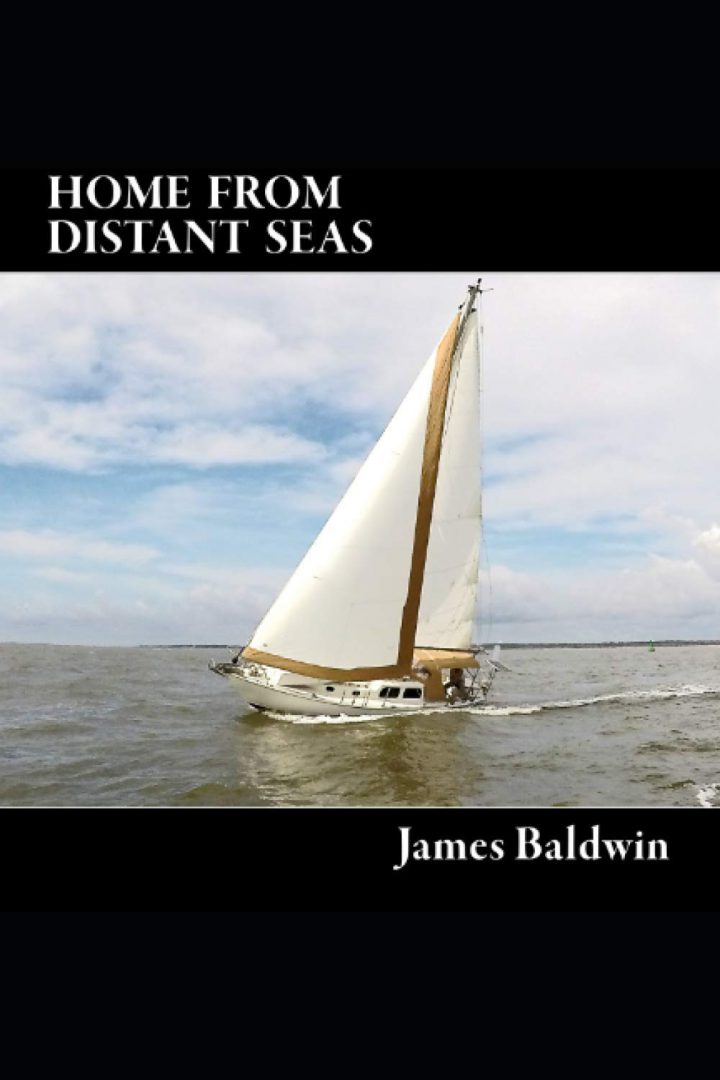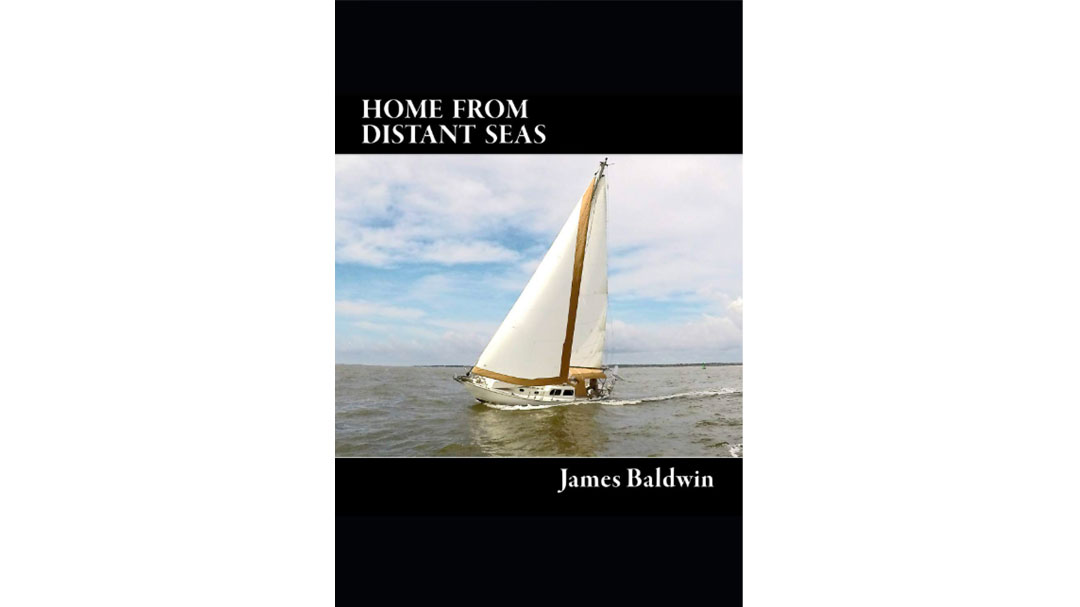 Home From Distant Seas is the final volume in James Baldwin’s Distant Seas trilogy, documenting the completion of his 13-year circumnavigation aboard Atom, his 1963 28-foot Pearson Triton. We follow Baldwin and his boat on a peripatetic Atlantic journey from South Africa’s Richards Bay, across to South America, up to Trinidad, Bermuda, and multiple points between and beyond, landing in the Bahamas and then, finally, the U.S. East Coast where his ocean travels end, and he returns to land.
Home From Distant Seas is the final volume in James Baldwin’s Distant Seas trilogy, documenting the completion of his 13-year circumnavigation aboard Atom, his 1963 28-foot Pearson Triton. We follow Baldwin and his boat on a peripatetic Atlantic journey from South Africa’s Richards Bay, across to South America, up to Trinidad, Bermuda, and multiple points between and beyond, landing in the Bahamas and then, finally, the U.S. East Coast where his ocean travels end, and he returns to land.
Good Old Boat uses affiliate links and may earn a small commission if you purchase anything after clicking through one of them. This comes at no cost to you.
When it comes to sailors committed to the small-and-simple waterborne life, few can rival Baldwin’s record. Twice he has rounded the globe on this “bantam-sized” good old boat, making the journey his life’s work for 25 years with very little fanfare, just good old-fashioned grit, cleverness, stubborn independence, and maybe a touch of hard-won swagger. Exploring is the point, not racing to get from port A to stop B, and by approaching his sailing through this lens he shows us some far-flung places we’d likely never see, like Devil’s Island off French Guiana, a former penal colony that was inspiration for the movie Papillon.
En route, we are treated to passages that are part logbook, part lyrical description, part thoughtful rumination as to why this life is so fulfilling:
“I turned on the SSB only once a day to exchange position reports with Theo,” he writes of sailing solo from Brazil past the mouth of the Amazon to French Guiana. “In between, I lived in the welcome silence and isolation of a spiritual journey. There was no homesickness for I carried my home with me. The monotonous and entrancing beauty of the sea induced a prolonged eyes-open meditation….we become so acclimated to a society that is so full of noise and digital diversions that silence of self is a discipline I crave from time to time in order to still the turbulent waters of my mind.”
Granted, most of us don’t sail half off the edge of the planet to achieve said silence from this cacophonous world, but that’s where Baldwin excels in taking us along for the ride. And while he clearly treasures solitude, he is a social creature with a seemingly endless curiosity and a reporter’s ability to draw stories out of the fellow sailors he meets along the way.
Sometimes these are deeply poignant, like the 50-something American named Jim sailing a home-built ferro-cement boat, who takes off on what Baldwin feels is clearly an ill-advised trip from South Africa to Australia with an Afrikaner woman who’s never sailed before. Fulfilling Jim’s request to keep a radio schedule with him via SSB, Baldwin describes what was likely their last transmission amid terrible weather, the conversation cut off mid-sentence and Jim and crew never heard from again.
“Those who perish at sea usually take their story with them,” Baldwin writes. “I had caught Jim’s last words—more of a final apostrophe to the sea than a conversation with me.”
Others are no-punches-pulled character essays, such as his visit in the Dominican Republic with Bruce Van Sant, who wrote the cruiser’s bible to easting in the Caribbean called The Gentleman’s Guide to Passages South. Though noting Van Sant’s generosity with his time and advice to sailors over the years, Baldwin describes a man who had pretty much had it with contemporary cruisers. “Competent and confident, Bruce served his strong opinions with a heaping side of arrogance…in print and in person, Bruce’s judgmental pronouncements did not make him particularly likable.”
Baldwin admits that “approaching my own senior years, I have to guard against a similar creeping cynicism born of witnessing too many failures take place. Old salts were once neophytes themselves. And a person’s apparent failures are a required product of living full and by.”
As much as he is interested in fellow sailors and their tales, he’s equally captivated by their boats, and when one catches his eye, his narrative provides descriptive detail rivaling any top-drawer boat review. Always tied to their people, these boats range from a steel gaff-rigged cutter whose owner wintered over alone in Antarctica, to a jungle schooner who, “with her rusty rigging, frayed hemp ropes, and threateningly long bowsprit, did appear as the definition of a quixotic creation—outlandish, impractical, and starkly out of place among the modern fiberglass yachts anchored around her.”
Baldwin meets this boat in Trinidad when it careens into the anchorage and, at the last minute, drops its massive anchor right on top of his. Rather than get irritated, he introduces himself and ends up spending days rafted up to the behemoth and befriending its young owner.
Packed with lively writing and characters galore, Baldwin’s book is both a sailing narrative and a chronicle of a subculture of global sailors and their boats who come in all shapes and sizes and from all walks of life. Nearly all of them celebrate the singular life that Baldwin has lived and logged so well.
Home From Distant Seas, by James Baldwin (Independently Published, 2020)





